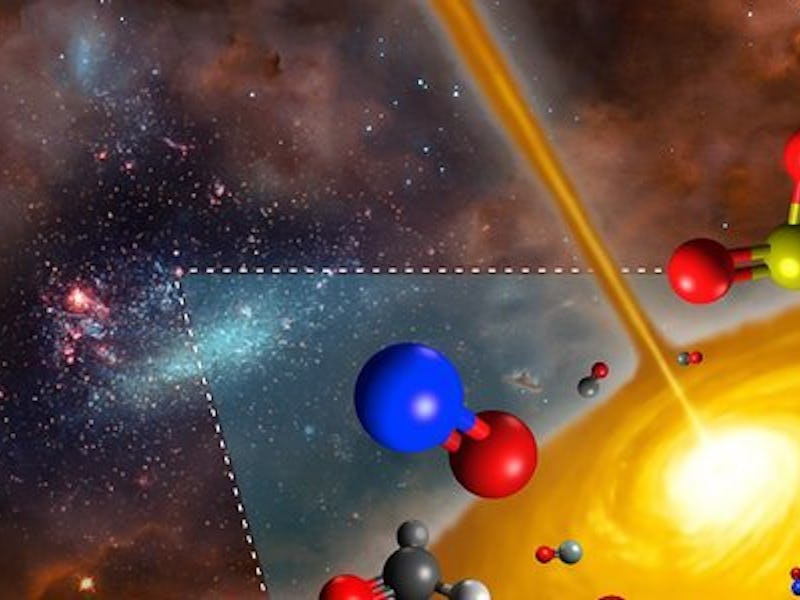Strange Chemistry for a Newborn Star

For the first time ever outside the Milky Way galaxy, scientists have observed a star with a hot molecular core. A Japanese research team used the Atacama Large Millimeter/submillimeter Array (ALMA), the European Space Agency’s cutting-edge telescope located in Chile, to make the discovery. The findings are presented in a paper published last month in the Astrophysical Journal.
The young star, commonly referred to as ST11, served as an excellent test for ALMAs capacity to successfully observe objects beyond our galaxy. The star’s full name is technically 2MASS J05264658-6848469, so we’re gonna just blow past that and keep calling it ST11.
Tohoku University astronomer Takashi Shimonishi, the paper’s lead author, said the discovery of hot, dense molecular gas around ST11 has exciting implications for both the use of telescopes like ALMA and our understanding of the process by which stars like ST11 form.
“This is the first detection of an extragalactic hot molecular core, and it demonstrates the great capability of new generation telescopes to study astrochemical phenomena beyond the Milky Way,” Shimonishi told the ESO. “The observations suggest that the molecular compositions of materials that form stars and planets are much more diverse than we expected.”
An infrared look at ST11's neighborhood.
What ALMA allowed the team to determine is that while this region of space contained all the usual molecules one would expect — sulfur dioxide, nitric oxide, formaldehyde — the molecular core lacked a number of organic compounds, like methanol. The unique composition would seem to suggest that the ‘galactic environment’ itself is unique, and led to the star’s core forming differently.
Pretty amazing stuff, but why should we care? Because the more we know about what accounts for organic molecules’ presence and distribution across different regions of space, the closer we get to understanding how they might form extraterrestrial (in this case, extragalactic) life.
ALMA at nighttime.